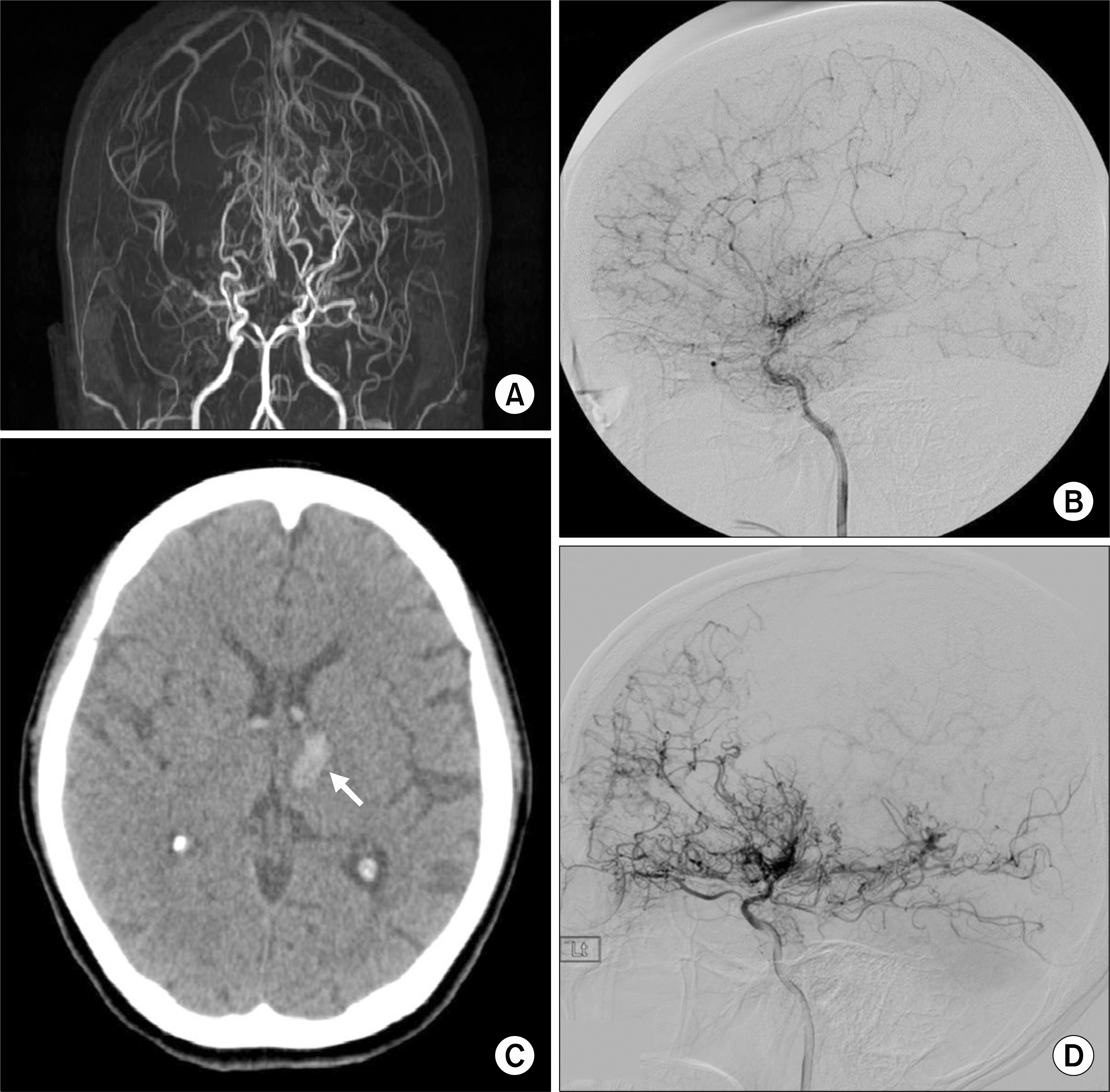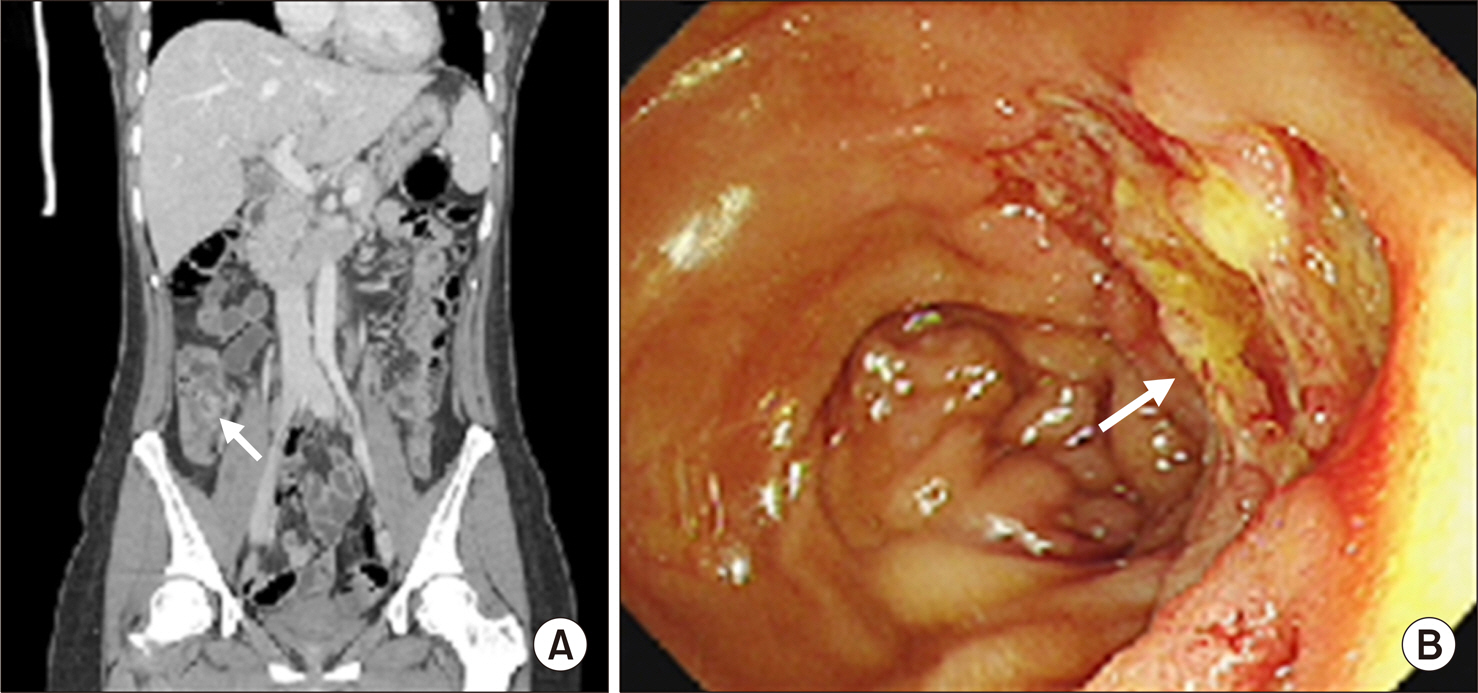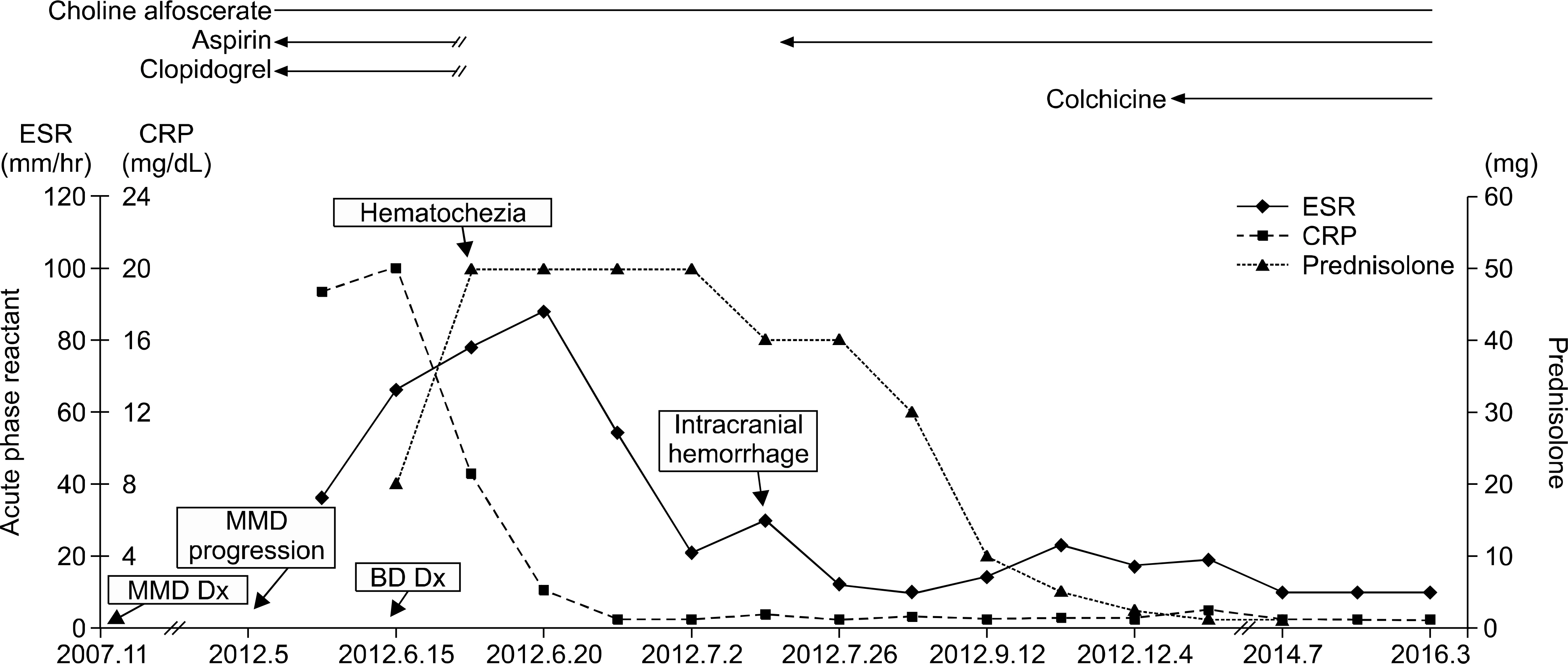J Rheum Dis.
2016 Dec;23(6):386-391. 10.4078/jrd.2016.23.6.386.
Case of Moyamoya Disease Aggravated during the Treatment of Behçet’s Disease
- Affiliations
-
- 1Department of Internal Medicine, Yonsei University College of Medicine, Seoul, Korea.
- 2Department of Internal Medicine, National Health Insurance Service Ilsan Hospital, Goyang, Korea. chanheell@daum.net
- 3Department of Radiology, National Health Insurance Service Ilsan Hospital, Goyang, Korea.
- KMID: 2364693
- DOI: http://doi.org/10.4078/jrd.2016.23.6.386
Abstract
- Behçet's disease (BD) is a multi-organ involved inflammatory disorder described by recurrent oral ulcers and other systemic manifestations. Almost all the clinical manifestations of BD are believed to be due to vasculitis. On the other hand, the cerebral arteries are rarely involved. Moyamoya disease (MMD) is an unusual chronic cerebrovascular disorder that is described by bilateral progressive stenosis or occlusion of the internal carotid artery and an abnormal collateral vascular network. A 32-year-old woman with MMD was referred for fever, oral pain, and diarrhea, and was diagnosed with BD. Her MMD was aggravated during treatment with high dose steroids to control the intestinal BD and a reduction in the MMD medication due to gastrointestinal bleeding. This is the first reported case of intestinal BD in a patient previously diagnosed with MMD, who experienced aggravation of her MMD after the cessation of MMD medication due to aggravated intestinal BD.
MeSH Terms
Figure
Reference
-
1. Yazici H, Fresko I, Yurdakul S. Behçet's syndrome: disease manifestations, management, and advances in treatment. Nat Clin Pract Rheumatol. 2007; 3:148–55.
Article2. Kim JS. Moyamoya disease: epidemiology, clinical features, and diagnosis. J Stroke. 2016; 18:2–11.
Article3. Chen JB, Liu Y, Zhou LX, Sun H, He M, You C. Prevalence of autoimmune disease in moyamoya disease patients in Western Chinese population. J Neurol Sci. 2015; 351:184–6.
Article4. Park YW, Chung JW, Yoon HJ, Yoon W, Kee SJ, Lee SS. Behçet's disease presenting with clinical manifestations of moyamoya disease. J Korean Rheum Assoc. 2005; 12:227–30.5. Joo SP, Kim TS, Lee JH, Lee JK, Kim JH, Kim SH, et al. Moyamoya disease associated with Behcet's disease. J Clin Neurosci. 2006; 13:364–7.
Article6. Degirmenci E, Bir LS, Yagcı B, Nazliel B, Siva A. Moyamoya syndrome or Behçet's disease? Int J Rheum Dis. 2014; 17:920–2.
Article7. Fei Y, Li X, Lin S, Song X, Wu Q, Zhu Y, et al. Major vascular involvement in Behçet's disease: a retrospective study of 796 patients. Clin Rheumatol. 2013; 32:845–52.
Article8. Han H, Pyo CW, Yoo DS, Huh PW, Cho KS, Kim DS. Associations of Moyamoya patients with HLA class I and class II alleles in the Korean population. J Korean Med Sci. 2003; 18:876–80.
Article9. Inoue TK, Ikezaki K, Sasazuki T, Matsushima T, Fukui M. Analysis of class II genes of human leukocyte antigen in patients with moyamoya disease. Clin Neurol Neurosurg. 1997; 99(Suppl 2):S234–7.
Article10. Takeuchi M, Kastner DL, Remmers EF. The immunogenetics of Behçet's disease: A comprehensive review. J Autoimmun. 2015; 64:137–48.
Article11. Yamada S, Oki K, Itoh Y, Kuroda S, Houkin K, Tominaga T, et al. Effects of surgery and antiplatelet therapy in ten-year follow-up from the registry study of research committee on Moyamoya disease in Japan. J Stroke Cerebrovasc Dis. 2016; 25:340–9.
Article12. Wang R, Xu Y, Lv R, Chen J. Systemic lupus erythematosus associated with Moyamoya syndrome: a case report and literature review. Lupus. 2013; 22:629–33.
Article




